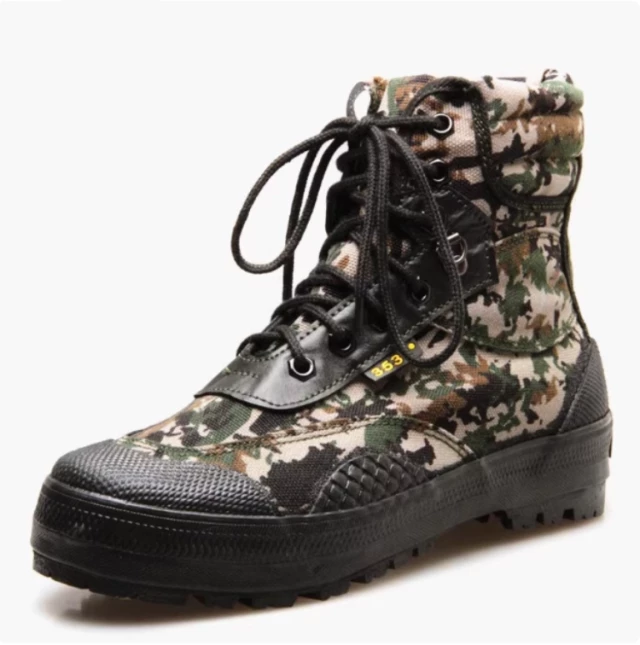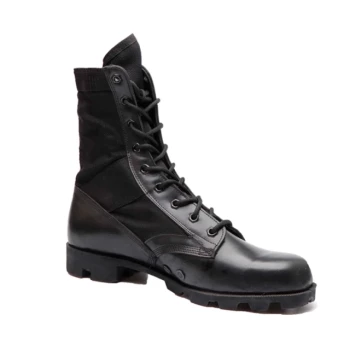From military surplus to limited-edition drops, camouflage has evolved into one of sneaker culture’s most potent design strategies. This article explores how brands transform utilitarian patterns into market dominance—and why consumers can’t resist the hunt.
Camouflage in Sneakers: Beyond Aesthetic Rebellion
Camouflage in footwear isn’t just about aesthetics—it’s a calculated language of exclusivity and identity. Originally designed to conceal, these patterns now reveal a wearer’s alignment with subcultures, from streetwear to high fashion.
Military Roots to Street Cred: The Cultural Reappropriation Timeline
- 1980s–1990s: Camo entered urban fashion through hip-hop and skate scenes, symbolizing rebellion against mainstream norms.
- 2000s: Brands like BAPE weaponized camo’s scarcity, turning it into a status marker. Their "1st Camo" print became as recognizable as a luxury logo.
- Present: Military-inspired designs now signal "quiet luxury," with muted tones replacing traditional disruptive patterns.
Key Insight: Camouflage’s power lies in its chameleon-like ability to adapt meanings—from counterculture to high-end collaboration.
Collabs as Camo Warfare: BAPE, Supreme, and the Scarcity Playbook
Limited-edition camo drops follow a proven formula:
-
Collaborative Alchemy
Team-ups (e.g., BAPE x Adidas, Supreme x Nike) merge fanbases, creating instant hype. The camo pattern often serves as the collaboration’s visual signature. -
Artificial Scarcity
Brands release camo designs in micro-batches, triggering FOMO. Research shows limited availability can increase perceived value by over 300%. -
Resale Market Fuel
Rare camo sneakers dominate resale platforms, with some markups exceeding 10x retail—proof of their cultural capital.
Pro Tip: For distributors, stocking camo-limited runs guarantees faster turnover and higher margins.
Psychology of the Hunt: Why Camo Triggers Sneakerhead Obsession
Camouflage plays into deep-seated consumer psychology:
- Tribal Belonging: Wearing niche camo designs signals insider knowledge, akin to a "uniform" for sneaker enthusiasts.
- Predator-Prey Dynamics: The pattern’s military heritage subconsciously frames shopping as a "mission"—scarcity turns buyers into hunters.
- Nostalgia Marketing: Millennials and Gen Z associate camo with ’90s nostalgia, making it a safe bet for retro-themed launches.
Brands like 3515 leverage this by offering customizable camo options for private-label clients, tapping into regional trends.
Manufacturing the Illusion: Advanced Camo Production Techniques
Modern camo isn’t just printed—it’s engineered. Leading manufacturers use:
- Laser Cutting: Precision techniques create intricate, layered patterns without fraying.
- Eco-Dyes: Water-based pigments meet sustainability demands while maintaining vibrancy.
- Hybrid Materials: Reflective threads or 3M details add nighttime visibility, blending function with style.
For bulk buyers, partnering with experts like 3515 ensures access to these technologies without minimum-order headaches.
The Future of Camo: AR Customization and Eco-Friendly Patterns
Next-gen camouflage is already here:
- Augmented Reality (AR): Apps let users "try on" digital camo designs before purchase, reducing returns.
- Biodegradable Inks: Algae-based dyes are gaining traction among eco-conscious brands.
- Dynamic Patterns: Thermochromic camo changes color with temperature, offering interactivity.
Forward-thinking manufacturers are investing in these innovations to meet 2025 EU sustainability mandates.
Ready to Capitalize on Camouflage? Partner with 3515
Whether you’re a distributor seeking trending designs or a brand owner developing exclusive patterns, 3515 delivers cutting-edge footwear solutions at scale. Our expertise in camo production—from military-grade durability to street-ready styles.
Related Products
- Wholesale Customizable Suede Safety Boots - Puncture-Proof with Velcro Closure
- Wholesale High-Traction Camo Boots - Custom Manufacturer for Brands
- Wholesale Classic Leather Lace-Up Ankle Boots for Brand Manufacturing
- Athletic Safety Shoes with Dial Closure & Steel Toe for Wholesale & Custom Manufacturing
- Wholesale Anti-Smash & Puncture-Proof Safety Shoes Custom Manufacturing for Brands
Related Articles
- How to Choose Work Boots That Match Your Job's Safety Demands
- Steel Toe Work Boots: Balancing Safety and Comfort for Demanding Jobs
- How Safety Work Boots Engineer Protection: Features and Standards for Targeted Hazard Mitigation
- Matching Men’s Work Shoe Safety Technologies to Workplace Hazards
- Work Boots vs. Western Boots: How to Choose the Right Footwear for Labor Safety



















